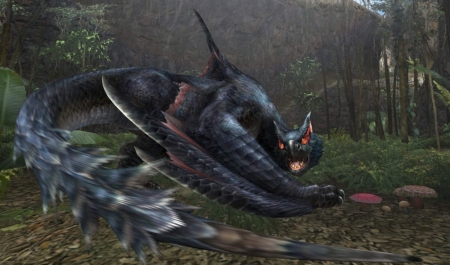Looking through Gamasutra, I can’t help but notice the feature Game Design Challenge: Free To Play from one of their sister sites. I thought it would have been interesting to see new and refreshing game ideas when I read the challenge, and later read the sites top picks when their deadline was over. To my disappointment, I don’t think any of the ideas presented from the readers are actually interesting and feasible at the same time.
For example, Ramboanasolo’s Unethical iContract, isn’t even meant to be a proper game, but more of technological experiment using the iPhone. The game revolves around people actually coming into close proximity in a given time frame of 3 days at the shortest and a month at the longest. People bet into a pool with real money involved, and the winner takes all. They are ranked through mini-games that occur on the iPhone or by taking a picture of a specific landmark that is assigned to them first.

Might as well play this.
But the mini-games only happen when people enter into each others range. Which means the occurrence is going to be rare, and sporadic. Nobody is going to bet into a pool when they don’t even know if they will encounter anyone. The solution is hotspots… for a single iPhone game? It’s an ‘interesting’ idea but doesn’t really fit the Free To Play (FTP from now on) model, and is unappealing, and unmarketable.
Another game on the list revolves around people putting money into the pool once again, hardly a FTP game at all, while the winner is mostly decided on who grinded the most. And other examples are different skins of the usual FTP market, except with flawed monetary models.
Of course the question is whether or not there can be innovations in the FTP market. I think the Korean market style works, but obviously the challenge was to create something new and refreshing while making it probable for production and sale.

To get an understanding of what the readers had to go against, let’s have a look into some of the traits of a Korean FTP game.
1. All players have full access! Free!
Obviously any blocks on the game would cause a split between the user-base. They aren’t trying to make money on the actual game content or they would have a monthly fee.
2. I’ve only spent a dollar, Micro-transactions.
Korean FTP games don’t want a large chunk of money from a single transaction, they want a lot of small individual transactions that feel insignificant to the users wallet. They are generally show up as in-game items that can be used by a character.
3. No significant advantages for purchasing items. But damn that hair is awesome!
Most items don’t effect the experience too much. Once again, any split in the community ruins it for everyone. Most items are cosmetic, or give experience point boosts, and occasionally have give a slight advantage on less important mechanics of the game, a slightly faster mount for example.
4. Grind. Grind. Grind!
While the content maybe open to all players, how fast they can actually access the content varies. I think most of these FTP games rely on the experience point boosters as their primary income. It’s hard to argue against this method because, in all honesty, this is probably the only sure way for most FTP games to make money.
5. The feeling of familiarity. Déjà vu?
A lot of Korean FTP games borrow from existing popular games, World of Warcraft like MMOs, Mariokart style racing games, Military first person shooters, Power Stone-ish fighters. It’s easy to attract people who just want to mess around with similar games but not actually spend money. Needless to say, it’s mostly generic and uninspired.

Whatever the quality, and I think they are usually decent at worst and good at best, the Korean FTP games have been successful. Creating a game that tries something different wouldn’t be easy, as all the Gamasutra’s rather improbable or uninteresting examples show.
Social network gaming is probably the most successful example of FTP games that are a bit different than the Korean ones. They focus on friends interacting with each other as a method to create a user-base, and a lot of in-game benefits occur when they do so. Of course the actual market is quite similar, you buy in-game items through micro-transactions, but they do have more freedom with game-enhancing items since the community is generally not competing with each other but working together.

So, do I have an interesting idea?
Well, no. Other than, ‘make a great game’, I can’t think of anything new. Quite frankly, the only other option is in-game advertising, and who wants a Coca-Cola ad while walking through a space station? Well, unless it’s Space-Mart, where I can buy a can of Space Coca-Cola along with a cute little Space Hamster. That sounds pretty awesome.








